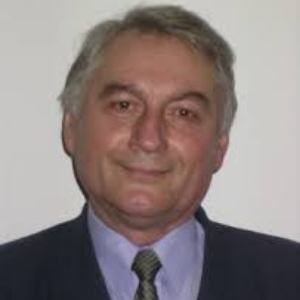Title : Description of mass transport through an asymmetric, bio-catalytic membrane reactors
Abstract:
The substrate transport accompanied by biochemical reaction has some special transport and operational properties, which can strongly affect the reaction efficiency of a bio-catalytic process. The biocatalyst is mostly immobilized in a porous, relatively thick support layer in an asymmetric membrane. It is assumed that the biocatalysts, which can be native enzyme or pre-treated, e.g. it is bound to nanoparticle for increasing its stability, is uniformly and densely distributed in the membrane and the reaction can be considered as a pseudo homogeneous process. Membrane can be flat-sheet or capillary one. In this latter case the transport through the membrane is occurring in changing space and depending on the inlet feed side, it may be on the lumen and shell, as it can strongly affect the substrate concentration distribution and consequently the biochemical reaction rate. Operation of the process maybe a so-called one-pass process or the feed solution can be recirculated. The kinetics of the transport or reaction is not basically affected by these operation modes. Both operation modes will be discussed in this presentation, assuming steady state or quasi steady state processes.
The differential substrate balance equation for this process should contain diffusion-, convection-, due to transmembrane pressure if it exists, and reaction terms. The first two terms can have constant or concentration/space coordinate dependent, namely diffusion coefficient, convective velocity, parameters. This description methodology can easily be extended for chemical reaction using e.g. inhomogeneous and/or intrinsically catalytic membranes. Main points of this presentation are as follows: i) presenting the inlet and the outlet mass transfer rates and concentration distribution by constant parameters (diffusion coefficient, convective velocity, reaction rate constant) using flat-sheet and capillary membrane with skin layer either on the shell or lumen; the reaction kinetics used is the general Michaelis-Menten kinetics, as well as first and zero-order reactions as its limiting cases; it is also discussed how the convective velocity and/ or the place of inlet feed side can improve the reaction rate, and thus the reaction efficiency.
ii) discussion of the effect of concentration dependent diffusion coefficient (linear or exponential dependency) as well as linear space coordinate dependency (increasing or decreasing one); a general approach solution of the differential balance equation will be shown [1], which can be used in case of the nonlinear Michaelis-Menten kinetics, or second order reactions, as well
iii) superior of the membrane reactor is demonstrated, as practical examples, by hydrolysis of oleuropein, and pectin, at which the reaction rate was measured in both the mixed tank reactor as well as by membrane bioreactor.
[1] E. Nagy, Basic equations of mass transport through a membrane layer, Elsevier, Amsterdam, 2019.
Acknowledgments: In this The National Development Agency grant OTKA 116727 and GINOP-2.3.2-15-2016-00017 greatly acknowledged for the financial support.
Audience Take Away:
Predicting the efficiency of a membrane reactor or planning its scale up, the correct description of the mass transport is crucially important. This presentation will show:
- The mass transfer rate equations for cases, when the differential mass balance equations can analytically be solved.
- It will also be shown an approach solution in closed mathematical forms for nonlinear cases of the transport process, namely e.g. variable parameters and/or nonlinear reaction rate as e.g. for the Michaelis-Menten kinetics.
- It is also shown how the process efficiency can be increased by the convective flow or by the transport direction in a capillary membrane, in presence of biochemical/chemical reactions.
- Generally, this presentation gives general summary on the description of a bio-catalytic/catalytic membrane reactor and prediction of the process efficiency, which can then be useful in investigation, realization of both laboratory and industrial membrane catalytic processes.



